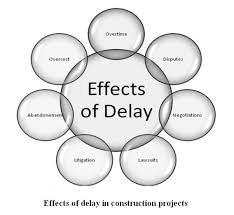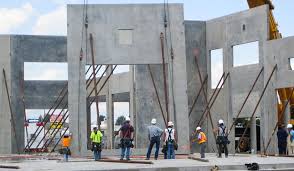 You are working with a construction scheduling consultant and they use terms you’ve heard before, but you’re not 100% sure you really understand what they mean. More importantly, you’re not sure how they affect the schedule.
You are working with a construction scheduling consultant and they use terms you’ve heard before, but you’re not 100% sure you really understand what they mean. More importantly, you’re not sure how they affect the schedule.
Do not be ashamed, why should you have any in depth knowledge of yet another specialized function of the project management process? That’s why professional planning and scheduling consultants exist!
What is the “Data Date” and why do I care?
The data date is simply the “as-of” date used for progressing the periodic schedule update.
Typically, the data date is the end of the month, but I’ve seen it be the 15th and the 25th. Each schedule specification is different based on the owner’s requirements for reporting. Note: MS Project uses the term “Status Date”.
This is the date that all progress should be updated for progress up to. Everything after the data date is the pan to execute the remaining project activities. There should never be work in progress or incomplete with dates prior to the data date. I’ve seen this all too often with schedules run in MS Project because the person doing the schedule update does not understand this concept and how to adjust the settings to force incomplete work to move to the status date. It’s a simple fix for an experienced scheduler. Always look at your schedules and know the data date and verify all work prior to the data date is complete and all work after the data date shows no progress. Think of the data date as the starting off point for the rest of your project…. This is a necessary practice for construction scheduling.
What is “OOS” and why do I care?
OOS or Out-of-Sequence is simply a way of saying that work actually completed did not progress as scheduled.
Typically, this involves an activity that was scheduled to start immediately after the finish of it’s “predecessor” having actually started prior to it’s “predecessor” finishing. Other reasons may be work progressing much differently than scheduled or work being suspended for whatever reason.
Why do you care? You care because this logic is still driving any “successor” activities and is not correct based on how you actually completed the work. It affects all downstream work logically tied to the finish of the OOS work and does not model the remaining work correctly.
This can affect change order fragnet insertions, not produce correct total float values, and does not provide you with an accurate as-built schedule. Best practice is to correct the logic for OOS work immediately after updating the progress each period update. Most schedule consultants do this, but many do not and most PM’s and Superintendents do not. Many owners are not aware of the need to correct OOS relationships and do not require or enforce this practice. This is unfortunate. There are times y0u can leave some OOS relationships in place, but absolutely OOS work on the longest path or near critical path should be correct. Most construction scheduling consultants correct OOS relationships each schedule update.
What are “Lags” and why do I care?
Lags are like invisible activities added to the schedule; which typically separate start dates of successor activities by a set amount.
Depending on which calendars are assigned and the relationship selected, a current activity’s successor activity will start immediately after the finish of the current activity, if the relationship is a Finish-to-Start, FS relationship. Adding a lag of 3 to this relationship would force the start of the successor to wait 3 work periods until starting. Sometimes this is used for concrete curing time…… I prefer to use an activity for this so the time is transparent.
But typically, lags are used with Start-to –Start, SS relationships to allow work to be schedule concurrently. The lag forces the successor activity to wait set number of work periods after the start of the predecessor activity starts before starting. This models a plan to start one piece of work and then start successive work a set duration later. Such as finishing gypsum board wall sheathing before the entire area covered by the activity to hang the gypsum wallboard has completed. This is fine if this represents your plan to execute this work. Unfortunately, this is also how most PM’s and Superintendents choose to get the scheduled finish date back on time after the periodic update shows the project is behind schedule. This is still fine if the work can actually be executed this way, and it is the actual plan to “recover” lost time. It is just so darn easy to do, that many times it is used to appease the owner only and no plan is used to actually accomplish the work concurrently. This happens when the schedule is only part of the invoice process, and not an integral part of the project management process.
Don’t be afraid of lags, but the use of lags should be judicious and justifiable. There are many ways to model the logic to reduce the number of lags used. Typically, breaking the work into smaller pieces will allow the work to be scheduled without the use of lags.
Negative lags are bad idea and should be avoided or disallowed. There are many ways to make the logic work without the use of negative lags. Most schedule consultants stay away from negative lags.
MS Project shows lags and relationship types other than Finish-to-Start, FS in the predecessor and successor columns. Primavera P6 does not. Although it is not always easy to understand the effect a lag is having on the schedule, you should always be aware of their usage and understand the effect they have on the project schedule.
When in doubt, seek out the advice of a professional planner and scheduler.
Please visit https://conschmanservices.com to learn more about basic schedule concepts.
Please visit my LinkedIn account to learn more about me.
Paul Epperson CCM, PMP, PSP, PMI-SP
 As construction scheduling professionals, we’ve all worked on projects which have been impacted by an owner delay which was not recognized as valid by the owner.
As construction scheduling professionals, we’ve all worked on projects which have been impacted by an owner delay which was not recognized as valid by the owner. As construction scheduling professionals, we’ve all developed project baseline schedules. We’ve also worked with our subcontractors to get their input for the schedule, often with less than stellar results…..
As construction scheduling professionals, we’ve all developed project baseline schedules. We’ve also worked with our subcontractors to get their input for the schedule, often with less than stellar results….. As construction scheduling professionals, we’ve all worked on smaller construction projects which have fallen behind schedule almost immediately after NTP.
As construction scheduling professionals, we’ve all worked on smaller construction projects which have fallen behind schedule almost immediately after NTP. We’ve all worked on projects where a major event has occurred and the project team had to scramble to manage the crisis.
We’ve all worked on projects where a major event has occurred and the project team had to scramble to manage the crisis. You have a
You have a  You have created your project’s
You have created your project’s  You are working with a construction scheduling consultant and they use terms you’ve heard before, but you’re not 100% sure you really understand what they mean. More importantly, you’re not sure how they affect the schedule.
You are working with a construction scheduling consultant and they use terms you’ve heard before, but you’re not 100% sure you really understand what they mean. More importantly, you’re not sure how they affect the schedule. You have an approved baseline project schedule, and now you are ready to receive the first periodic schedule progress update from your contractor. That is great, progress is good. You are sharing a valid tool with your contractor to proactively managing the project. But, you still need to monitor the actual work progress and ensure the contractor is realistically updating the progress and taking corrective action as necessary to maintain the project’s scheduled plan to execute the project. How do
You have an approved baseline project schedule, and now you are ready to receive the first periodic schedule progress update from your contractor. That is great, progress is good. You are sharing a valid tool with your contractor to proactively managing the project. But, you still need to monitor the actual work progress and ensure the contractor is realistically updating the progress and taking corrective action as necessary to maintain the project’s scheduled plan to execute the project. How do